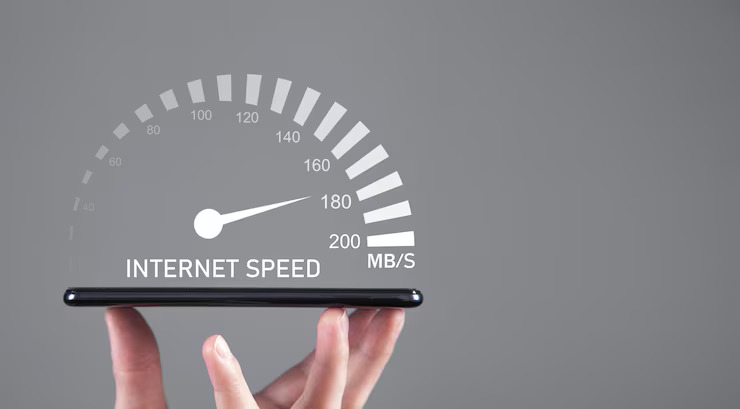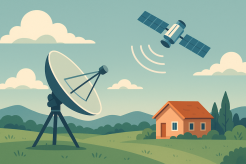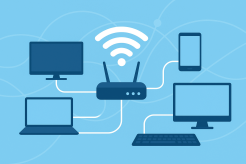Why Your Internet Feels Slow (Even If You're Paying for High Speed)

Ever feel like your internet is dragging—buffering videos, lagging in games, or crawling through downloads—even though you're paying for “high-speed” service? You’re not alone. Many users experience this frustrating disconnect between advertised speeds and real-life performance. Let’s uncover the common culprits behind your slow internet and offer actionable tips to fix them.
Your Internet Speed vs. Your Actual Experience
The Speed You Pay For Isn’t Always the Speed You Get
Internet providers advertise speeds under ideal conditions, but your actual speed can vary significantly based on several internal and external factors. This includes device capability, network congestion, signal strength, and more.
Why the Disconnect Happens
Here’s the thing: most speed issues aren’t because your plan is slow—it’s because of how your internet is being delivered and used.
Top Reasons Your High-Speed Internet Feels Slow
1. Wi-Fi Signal Weakness
Wi-Fi is convenient, but it’s not always the fastest or most reliable option—especially with walls, floors, and other obstacles interfering with the signal.
👉 Learn more about this issue by checking out Wi-Fi vs wired: which connection offers better internet speed.
2. Too Many Devices, Not Enough Bandwidth
Smartphones, laptops, TVs, gaming consoles—your household may have dozens of devices connected at once. Each one takes a slice of your bandwidth pie.
3. Outdated Hardware
Routers and modems have a shelf life. If you’re using equipment that’s more than 3–5 years old, you’re likely not getting the full speed your provider offers.
4. Background Apps and Automatic Updates
Many applications run silently in the background, sucking up bandwidth without you noticing. Cloud backups, software updates, and even smart home devices can slow things down.
5. Internet Plan That Doesn’t Match Your Needs
You might be paying for high speed—but is it the right speed for your usage?
👉 Use this helpful internet speed needs calculator tool to determine if your current plan aligns with your household's actual demands.
6. Peak Hour Congestion
Just like traffic jams during rush hour, your neighborhood’s internet can slow down during peak usage times—typically in the evenings when everyone’s streaming or gaming.
7. ISP Throttling
Some internet service providers may intentionally slow down certain types of traffic, like video streaming or torrents, especially once you reach a data cap. Check your provider’s terms of service to be sure.
8. Location of Your Router
Placing your router in a corner or behind thick walls? That’s like trying to shout through a pillow. The placement of your router dramatically affects Wi-Fi performance.
How to Troubleshoot and Improve Your Internet Experience
Switch to Wired for Speed Stability
Whenever possible, use an Ethernet cable. Wired connections are faster, more stable, and immune to most types of interference.
Upgrade Your Router and Modem
Investing in a modern router that supports the latest Wi-Fi standards (like Wi-Fi 6) can drastically improve your network's speed and reliability.
Reboot Regularly
Sometimes all your network needs is a good ol’ reboot. Restart your modem and router at least once a month to refresh connections.
Monitor Your Devices
Use your router's admin panel or a third-party app to see which devices are hogging bandwidth. You might be surprised at what's slowing you down.
Choosing the Right ISP Plan Based on Speed Needs
If your usage habits have changed—more remote work, streaming in 4K, or gaming online—you may need to reevaluate your internet plan.
👉 Check out this guide on filtering internet providers based on speed needs to ensure you're not overpaying or under-subscribing.
When to Call Your Internet Provider
If you've tried everything and your speed still lags behind what you're paying for, it's time to call your ISP. Ask them to run a line test or check for outages or throttling.
Conclusion: Fast Internet Isn’t Just About the Plan
A slow internet connection despite a high-speed plan can be frustrating, but it’s usually fixable. Whether it’s hardware, network congestion, or an underpowered plan, identifying the problem is the first step toward a smoother online experience.
Related Posts

Fri, Dec 5, 2025 12:20 PM
TechnologyWhy You Need a VPN Today (and How It Protects You Online)
Learn how VPNs protect your data, block tracking, and secure your connection across every device.

Thu, Dec 4, 2025 3:30 AM
Internet BundlesBest Fiber Internet Providers in the US : Fast, Reliable, and Worth It
Discover the top fiber internet providers in the US, their speeds, pricing, and customer satisfaction ratings. Find the best plan for fast, reliable, and uninterrupted internet.

Thu, Dec 4, 2025 3:17 AM
Internet Bundles cheap internet dealsHughesnet Satellite Internet Review: Plans, Pricing, Speed
Get an in-depth Hughesnet Satellite Internet review covering plans, pricing, speed, and performance. Learn whether Hughesnet is the right choice for rural or remote households

Wed, Dec 3, 2025 2:36 AM
Internet BundlesBest Cheap Internet Plans Under $50 a Month You Can Actually Use
Discover the best cheap internet plans under $50 per month with reliable speeds, unlimited data, and flexible options. Compare top providers and find the right plan for your home.

Wed, Dec 3, 2025 2:05 AM
cable dealWhat Can You Really Do With a 100 Mbps Internet Connection?
Discover what a 100 Mbps internet connection can handle, from streaming and gaming to remote work. Learn how to choose the right plan for your household.